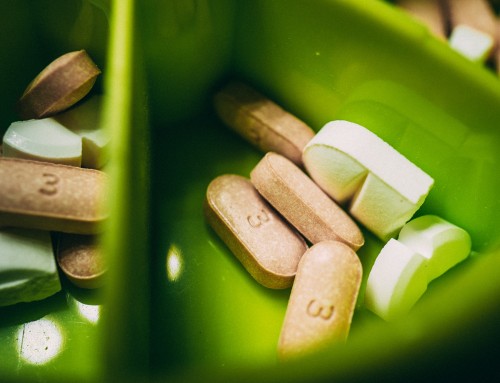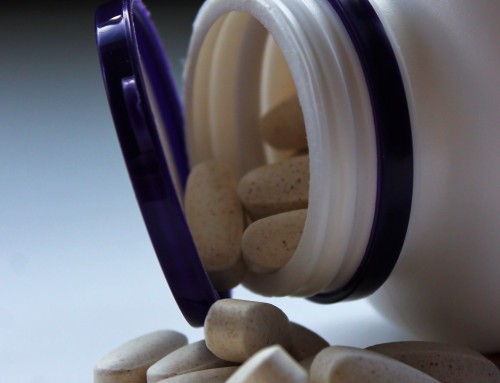Zinc Supplement FAQs
Zinc
Zinc Is an essential mineral that is water soluble. It is required for a plethora of different functions within the body, this includes protein synthesis (1), the immune system, (2), wound healing, (3) and DNA synthesis whilst also potentially helping reduce the effects of liver disease, (4).
As the body does not create this type of mineral, it is imperative to get enough either through diet or supplementation. This article will aim to answer some of the most common questions around zinc.**Please note that supplement guidance is recommended if you are deficient in Zinc and cannot boost levels if not deficient.**
What is It?
There are many different types of zinc, below are a few of the most common and what they are used for;
Gluconate
This type of zinc is combined with gluconate salt. It is mainly used in lozenges to help people increase levels of zinc. Also some evidence suggests that it can reduce the duration of a cold (5).
Citrate
Zinc can be combined with citric acid to make zinc citrate. This type of zinc is found in products such as mouthwash, toothpaste and chewing gum to help with gum disease and bad breath (6)
Picolinate
Zinc Picolinate has been found to have the highest absorption rate when compared to other forms of zinc (7). However this type of zinc can be expensive and so doesn’t tend to get used in too many supplements.
Acetate
Zinc is Combined with acetic acid to form Zinc acetate. This form of zinc is used in lozenges to help with colds, similar to zinc gluconate, (8). It has also been used to treat Wilson’s disease which is a rare condition where there is a copper build in the body’s vital organs, (9).
Oxide
Zinc Oxide is widely and commonly used as a lotion for skin irritation and rashes, (10), as well as many other functions due to its chemical properties such as sun lotion (11).
Sulphate
Zinc Sulphate is most commonly used in supplements due to its relatively low cost but high effectiveness. There is evidence that it can help with rheumatoid arthritis but more research is needed (12). This type of zinc is also used to treat zinc deficiency and has also been found to help reduce the severity of acne, (13)
How much to take and when to take it?
The Recommended Daily amount of zinc is 11 mg for adult males and 8mg for adult females.
| Age | Male | Female | Pregnancy | Lactation |
| 0–6 months | 2 mg* | 2 mg* | ||
| 7–12 months | 3 mg | 3 mg | ||
| 1–3 years | 3 mg | 3 mg | ||
| 4–8 years | 5 mg | 5 mg | ||
| 9–13 years | 8 mg | 8 mg | ||
| 14–18 years | 11 mg | 9 mg | 12 mg | 13 mg |
| 19+ years | 11 mg | 8 mg | 11 mg | 12 mg |
How does it work/help?
As was mentioned earlier Zinc is involved in many functions within the body so being deficient in zinc might implicate many bodily functions. Below are examples of what it can help with and the strength of evidence behind them;
Blood Pressure – Weak Evidence
The role of zinc on blood pressure is not an obvious one but it has to do with the taste of salt. One suggested reason is that people with a zinc deficiency have a reduced sense of taste with salt and so may increase salt intake to counter this which can in turn lead to a rise in blood pressure, (14). However the causality and regulation of blood pressure in relation to zinc deficiency is lacking in evidence and more research is needed.
Diabetes – Strong Evidence
One of the known roles of zinc is the prolonging effectiveness of insulin (15). Type 2 diabetes, (T2DM) is a condition where there is a build up of glucose in the blood which the body is unable to access due to insulin resistance.
Insulin is a hormone that doubles the rate of transportation of glucose from the blood into the body’s cells. Zinc is known to play a key role in the synthesis, storage and secretion of insulin, (16) and so being deficient in zinc will impair insulin’s overall ability. (17)
Acne – Strong Evidence
Topical creams and gels have been used as a novel approach to reducing acne instead of antibiotics and several studies have shown similar effectiveness, (18-20). A suggested mechanism for why zinc is beneficial is due to its anti-inflammatory properties, (21). There is also evidence that it can help with eczema, (22).
Vision – Some Evidence
Macular degeneration is a common eye disease that impairs vision. Studies have found that consuming zinc can help slow down the effect that this can have on vision, (23-24). There have been other studies that have suggested that zinc cannot inhibit macular degeneration on its own but in addition to antioxidants, (25). More research is needed to elucidate the effectiveness.
References
1- Baltaci, A. K., Mogulkoc, R., & Baltaci, S. B. (2019). The role of zinc in the endocrine system. Pakistan journal of pharmaceutical sciences, 32(1).
2 – Wessels, I., Maywald, M., & Rink, L. (2017). Zinc as a gatekeeper of immune function. Nutrients, 9(12), 1286.
3 – Lin, P. H., Sermersheim, M., Li, H., Lee, P. H., Steinberg, S. M., & Ma, J. (2018). Zinc in wound healing modulation. Nutrients, 10(1), 16.
4 – Mohammad, M. K., Zhou, Z., Cave, M., Barve, A., & McClain, C. J. (2012). Zinc and liver disease. Nutrition in Clinical Practice, 27(1), 8-20.
5 – Hemilä, H. (2017). Zinc lozenges and the common cold: a meta-analysis comparing zinc acetate and zinc gluconate, and the role of zinc dosage. JRSM open, 8(5), 2054270417694291.
6 – Moran, J., Addy, M., Corry, D., Newcombe, R. G., & Haywood, J. (2001). A study to assess the plaque inhibitory action of a new zinc citrate toothpaste formulation. Journal of clinical periodontology, 28(2), 157-161.
7 – Barrie, S. A., Wright, J. V., Pizzorno, J. E., Kutter, E., & Barron, P. C. (1987). Comparative absorption of zinc picolinate, zinc citrate and zinc gluconate in humans. Agents and actions, 21(1), 223-228.
8 – Turner, R. B., & Cetnarowski, W. E. (2000). Effect of treatment with zinc gluconate or zinc acetate on experimental and natural colds. Clinical infectious diseases, 31(5), 1202-1208.
9 – Brewer, G. J. (2001). Zinc acetate for the treatment of Wilson’s disease. Expert opinion on pharmacotherapy, 2(9), 1473-1477.
10 – Vinardell, M. P., Llanas, H., Marics, L., & Mitjans, M. (2017). In vitro comparative skin irritation induced by nano and non-nano zinc oxide. Nanomaterials, 7(3), 56.
11 – Kołodziejczak-Radzimska, A., & Jesionowski, T. (2014). Zinc oxide—from synthesis to application: a review. Materials, 7(4), 2833-2881.
12 – Simkin, P. (1976). Oral zinc sulphate in rheumatoid arthritis. The Lancet, 308(7985), 539-542.
13 – Verma, K. C., Saini, A. S., & Dhamija, S. K. (1980). Oral zinc sulphate therapy in acne vulgaris: a double-blind trial. Acta dermato-venereologica, 60(4), 337-340.
14 – Carpenter, W. E., Lam, D., Toney, G. M., Weintraub, N. L., & Qin, Z. (2013). Zinc, copper, and blood pressure: Human population studies. Medical science monitor: international medical journal of experimental and clinical research, 19, 1.
15 – Chabosseau, P., & Rutter, G. A. (2016). Zinc and diabetes. Archives of Biochemistry and Biophysics, 611, 79-85.
16 – Jayawardena, R., Ranasinghe, P., Galappatthy, P., Malkanthi, R. L. D. K., Constantine, G. R., & Katulanda, P. (2012). Effects of zinc supplementation on diabetes mellitus: a systematic review and meta-analysis. Diabetology & metabolic syndrome, 4(1), 1-12.
17 – Cruz, K. J. C., Morais, J. B. S., de Oliveira, A. R. S., Severo, J. S., & do Nascimento Marreiro, D. (2017). The effect of zinc supplementation on insulin resistance in obese subjects: a systematic review. Biological trace element research, 176(2), 239-243.
18 – Cochran RJ, Tucker SB, Flannigan SA. Topical zinc therapy for acne vulgaris. International Journal of Dermatology. 1985;24(3):188–190.
19 – Feucht CL, Allen BS, Chalker DK, Smith JG., Jr. Topical erythromycin with zinc in acne. A double-blind controlled study. Journal of the American Academy of Dermatology. 1980;3(5):483–491.
20 – Cervantes, J., Eber, A. E., Perper, M., Nascimento, V. M., Nouri, K., & Keri, J. E. (2018). The role of zinc in the treatment of acne: A review of the literature. Dermatologic therapy, 31(1), e12576.
21 – Bae YS, Hill ND, Bibi Y, Dreiher J, Cohen AD. Innovative uses for zinc in dermatology. Dermatologic Clinics. 2010;28(3):587–597.
22 – Faghihi G, Iraji F, Shahingohar A, Saidat AH. The efficacy of “0.05% Clobetasol + 2.5% zinc sulphate” cream versus “0.05% Clobetasol alone” cream in the treatment of the chronic hand eczema: a double-blind study. Journal of the European Academy of Dermatology and Venereology. 2008;22(5):531–536.
23 – Newsome, D. A., Swartz, M., Leone, N. C., Elston, R. C., & Miller, E. (1988). Oral zinc in macular degeneration. Archives of ophthalmology, 106(2), 192-198.
24 – Smailhodzic, D., van Asten, F., Blom, A. M., Mohlin, F. C., den Hollander, A. I., van de Ven, J. P., … & Klevering, B. J. (2014). Zinc supplementation inhibits complement activation in age-related macular degeneration. PloS one, 9(11), e112682.
25 – Vishwanathan, R., Chung, M., & Johnson, E. J. (2013). A systematic review on zinc for the prevention and treatment of age-related macular degeneration. Investigative ophthalmology & visual science, 54(6), 3985-3998.




